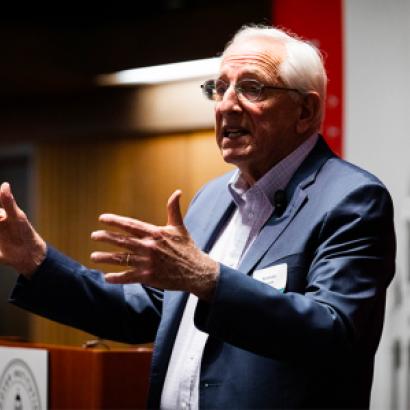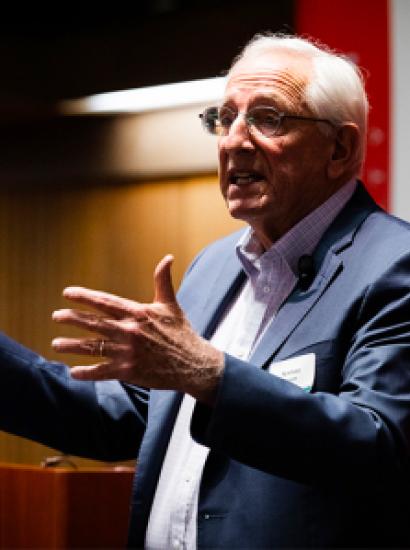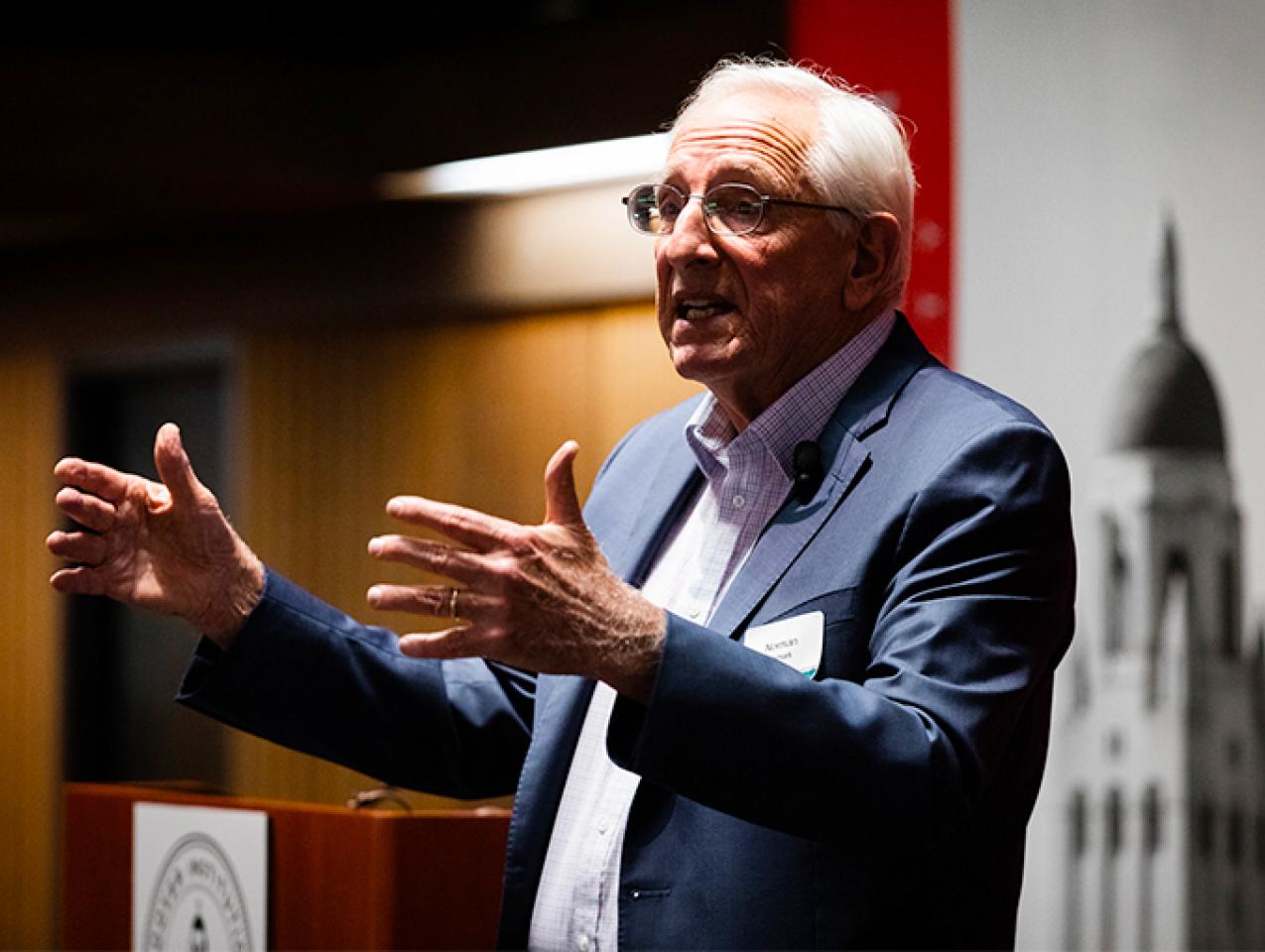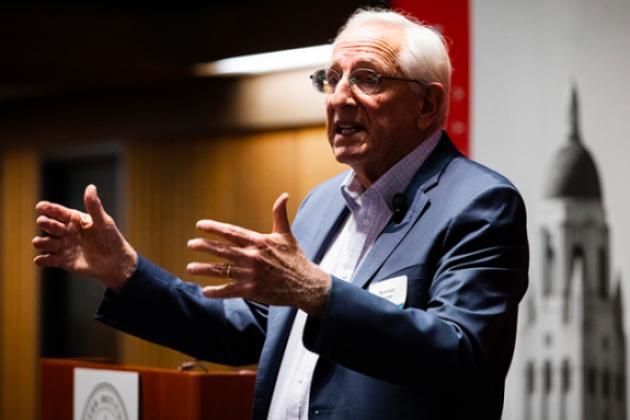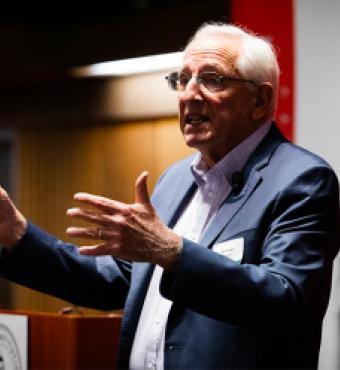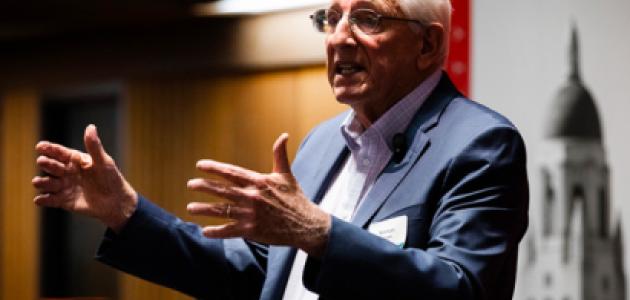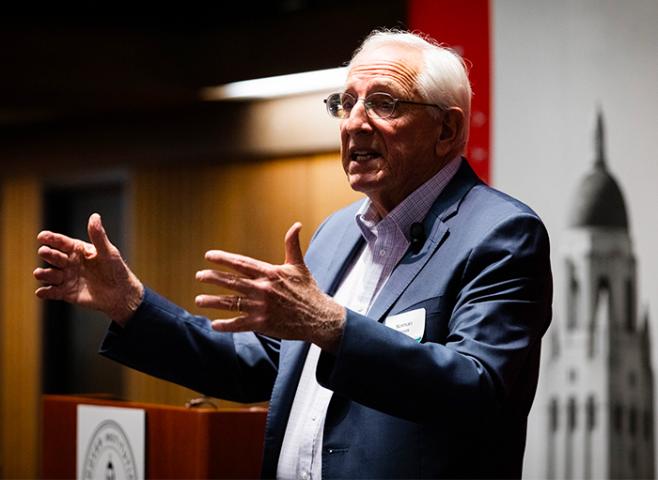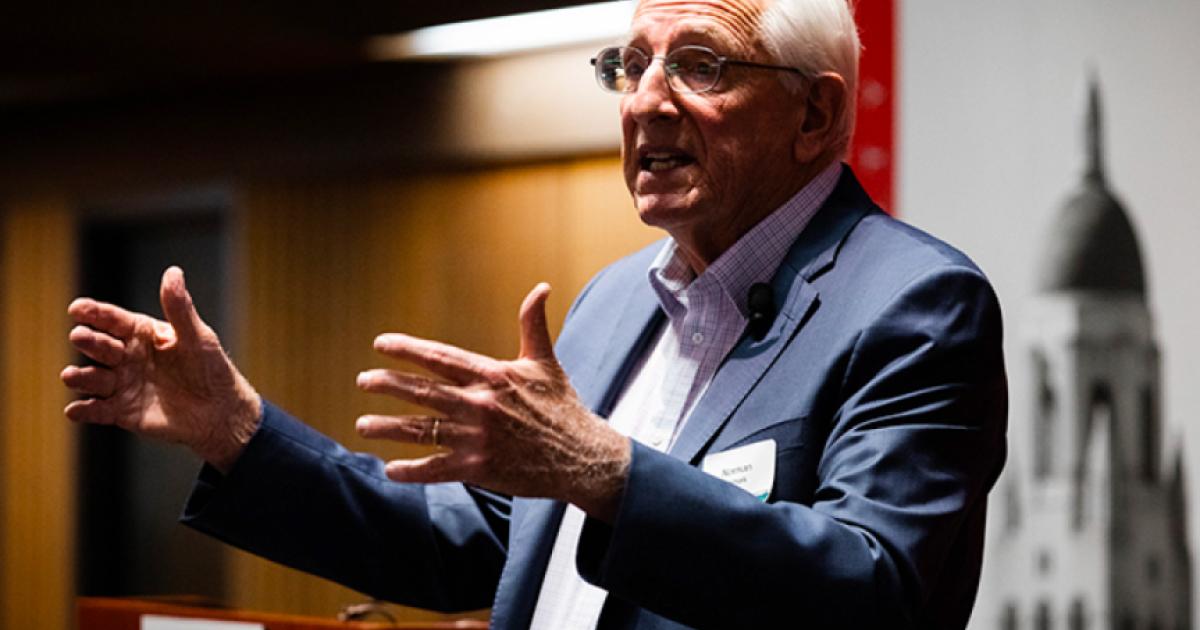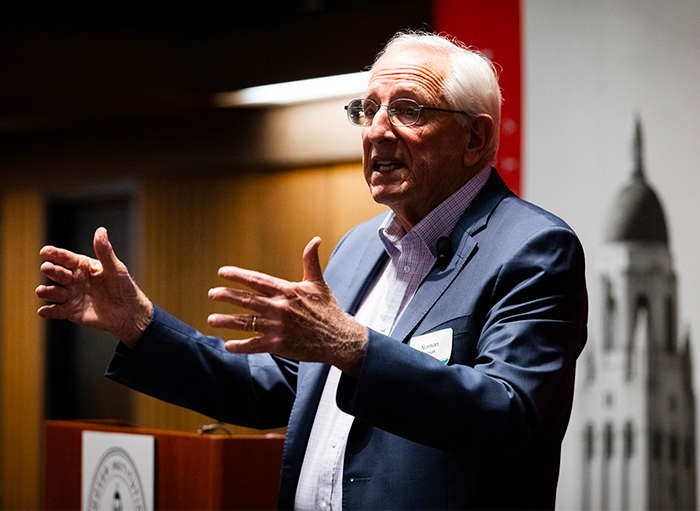
Joseph Stalin had a vision to expand Soviet power and influence throughout Europe and beyond. To this end, he was a ruthless and tireless micromanager who shaped foreign policy with great dexterity and oversaw the Soviet Union’s vast ministry of foreign affairs.
Historians have debated whether this level of authoritarianism made Stalin a hard-nosed realist for Russian interests or an “idealist” for the supposed universal principles of communism.
“My conclusion is that he is all of these things,” said Norman Naimark, Hoover Institution senior fellow and Stanford University professor of Eastern European Studies, during a lecture in Hoover’s Stauffer Auditorium about his recently published book, Stalin and the Fate of Europe: The Postwar Struggle for Sovereignty.
“The highest measure of Marxism, Leninism, [and] Stalinism is super realism. Principles don’t matter.”
Through a series of seven case studies about Stalin’s actions in Europe, Naimark in his book counters what he believes has been a reductionist theme of Cold War history: the United States versus the Soviet Union in a worldwide battle over whose political system would prevail. Naimark argues that Stalin had no firm immediate plans for postwar Europe. However, Stalin did not want to see the continent divided along American and Soviet lines; his hope was that all of Europe would eventually—over the long term—adopt communism.
In addition, Naimark holds, European leaders exhibited considerable agency in their dealings with the Soviet Union. He argues that the re-emergence of democratic elections after the Second World War shaped the future of these sovereign states.
The first case study Naimark illustrates is the Soviet occupation of Denmark’s island of Bornholm in May 1945. Naimark believes Stalin’s objective was to expand Soviet naval power in the western portion of the Baltic Sea and to exert influence over Denmark. However, Stalin curiously decided not to Sovietize Bornholm, and the occupation ended a little less than a year later, in April 1946.
“The Danes dealt very carefully and skillfully with the Soviets,” Naimark remarked.
Naimark explained that Denmark didn’t object publicly to the occupation. Furthermore, they engaged the Soviet leadership in trade and a made a series of concessions, including the prohibition of NATO troops on Bornholm. This did not mean that Danish troops assigned to NATO couldn’t defend the island.
Naimark presented another case study of Stalin’s influence, citing the Italian parliamentary elections of 1948. The Soviets supported Palmiro Togliatti and the Italian Communist Party while the United States urged voters to back Alcide De Gasperi and the Christian Democrats.
While the United States ran covert operations against the Communists and brought diplomatic pressure to bear by threatening to rescind Marshall Plan aid, Naimark said, Italians mobilized for the Christian Democrats in unprecedented fashion for their fledgling democracy. The Roman Catholic church also played an integral role by exhorting voters against communism and disassembling Togliatti’s claims that he too was a believing Catholic.
After De Gasperi and the Christian Democrats won the elections, some factions of the Communist Party wanted to stage an armed uprising. Behaving as a consummate realist, Stalin backed down, Naimark noted.
“Stalin did not want war against the West, under no circumstances,” Naimark said.
Naimark also discussed Stalin’s blockade of West Berlin and America’s subsequent airlift of food and supplies. He argued that it wasn’t Stalin’s goal to divide Germany or Berlin. The Soviet leader would have much preferred a united Germany the Soviet Union could dominate politically and geostrategically and from which it could exact war reparations. Stalin even attempted to induce Germans living in the West to emigrate to the East. At a minimum, he wanted the United States to leave Germany.
Though Naimark credits the US forces for the airlift, he said the German people’s resolve during this crisis should not be underestimated. The mayor of West Berlin, Ernst Reuter, compelled his constituents not to leave West Berlin for the East. He staged popular demonstrations against Soviet ambitions, the most significant of which included 300,000 supporters in front of the Reichstag on September 9, 1948.
“There are film cameras everywhere, and he’s saying ‘world look at us! We are on our feet, and we want freedom,’” Naimark said. “This kind of unity I think saved the situation of the blockade.”







